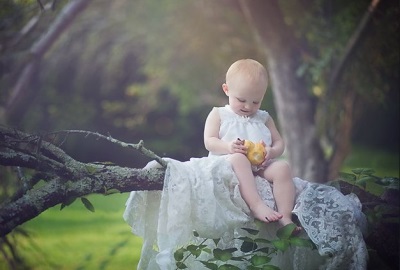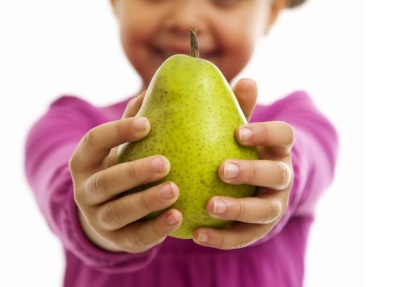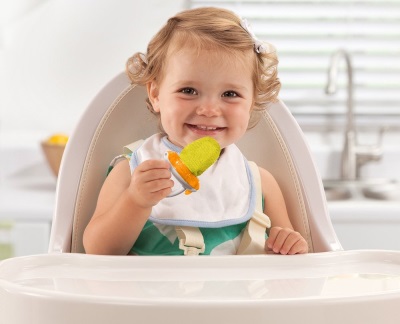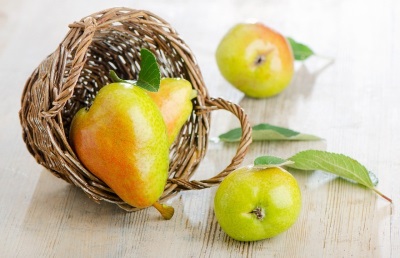At what age can you give a pear to children?
Grudnichkov begin to acquaint with new food from 6 months of age, and for the first time babies-artificials are treated to porridge or vegetables one or two months earlier. When it comes time for fruit foods, they often start with local fruits, for example, apples and pears. Therefore, any mother should find out what is useful for the baby pear, in what form it can be given to the toddler and how to choose the highest quality fruit.
Benefit
- Pears contain fructose, sucrose and glucose, as well as pectins, tannins and organic acids.
- Pear pulp is a good source of vitamins PP, C, group B and carotene.
- Pears are rich in minerals, among which are zinc, fluorine, cobalt, copper, iodine, vanadium, nickel, molybdenum.
- The pear is well absorbed, improves mood, relieves nervous tension, tones and normalizes the heart rhythm.
- Pears have a diuretic, disinfecting, antipyretic, anchoring and expectorant effect.
- Pear attributed to low-allergenic products.
Minuses
- Eating fresh pears can cause stomach heaviness.
- This fruit is contraindicated in gastritis and colitis.
Is the child's chair weak or is it mounting?
Pears have a fixing and astringent effect on the stool, so these fruits are often used for disorders of the digestive function, in which the stool is liquefied.
Over-ripe pears can weaken, so they should be used with great care.
From what age can you put in complementary foods?
Usually, a pear is introduced to children who have already tried an apple. This occurs at about 7 months in infants fed with her mother's milk, or at 5-6 months in crumbs on artificial feeding.
In what form to give?
If the kid has not tried a pear before, he is recommended to cook mashed potatoes from baked or boiled pears.
Baking reduces the number of allergens, so this pear is given even to babies with diathesis. The fruit is washed, cleaned from the core and placed in the oven for 10-15 minutes, then cooled, the pulp is removed and mashed slightly to give to the toddler.
For pear and puree peeled fruit, you can boil them for a while in a small amount of water, and then make mashed potatoes. Combinations of pear puree with other fruits already familiar to the baby are welcome, for example, a child can make apple-pear puree.
In addition to puree, pears are given to children in the form:
- Slices of fresh fruit (from 11 months).
- Dried pear compote (from 6-7 months).
- Pear juice (from 7-8 months).
To learn how to make pear puree, see the following video.
How to enter into the diet?
The first pear sample should be held for breakfast, so that by the end of the day the child’s tolerance of the fruit should be noted. Crumbs give half a spoonful of pear puree and watch the reaction. If no adverse symptoms appear, the pear begins to be given in the fourth feeding.
At the same time, bottle-fed crumbs are offered up to 30 g of pear puree at 5 months of age and up to 60 g from 6 months.After feeding, the baby’s pear puree is fed with the mixture.
Breastfed babies at 6-7 months of age are given up to 30 g of pear puree, and by eight months - up to 70 g.
From the age of 7 months, they begin to offer pear juice to artificial children, giving it to the third feeding in a maximum of 30 ml. Children on HB are offered pear juice at 8 months of age.
Tips for choosing
If you want to give a pear to your baby, pick a ripe and moderately soft fruit without any damage and rotten areas. To do this, carefully inspect the pear, feel it and smell it. A pleasant sweet smell will tell you that the fruit is ripe.
What to do if you are allergic?
Noting the adverse reaction of the child to the pear, the product should be excluded from the diet of the child for some time. After 1-2 months, you can try to enter this fruit in the diet again. If the child still responds to the pear with an allergic reaction, it is not given to the child until the age of 3 or longer, until the allergy persists.





























































